
- •Англійська мова
- •Text a. Clothes express me
- •Text b. To sew, or buy ready-to-wear?
- •Alternative ways of dressing well
- •Unit 2 Text a. Getting Ready to Sew
- •Text b. Fabrics
- •Text a. Sewing Machine
- •Inserting the Upper Thread.
- •Text b. Sewing Tools and Aids
- •Text a: Machine Stitches
- •Regulation Stitch
- •Basting Stitch
- •Stitching for Gathering
- •Fig.3Fig.4 Stitching for Reinforcement
- •Zigzag Stitch
- •Running Stitch
- •Basting Stitch
- •Back-Stitch
- •Pinning
- •Stitching
- •Trimming
- •Grading
- •Clipping
- •Unit5 Text a: Sleeves
- •Two-piece Set-In Sleeve
- •Puffed Sleeve
- •Shirt Sleeve
- •Dolman Sleeve
- •Text b: Cuffs
- •Straight Cuff Closed at Ends
- •Straight Cuff with Open Ends
- •Shaped Cuff Closed at Ends
- •Shaped Cuff with Open Ends
- •Cuff Applied with Bias Facing
- •Shirt Cuff
- •French Cuff
- •Round Collar
- •Pointed Collar
- •Sailor Collar
- •Band Collar
- •Patch Pockets
- •Set-in Pockets
- •Inner Pillow Form
- •Pillows without Boxing
- •Pillows with Boxing
- •Shaped Valances
- •Soft Valances
- •Text c: Pillows Covers
- •Separate Pillow Throw, Sewn to Spread
- •Bolster Roll
Unit5 Text a: Sleeves
Key Words and Phrases:
Maintained – підігнаний, set-in – вшивний, bodice – ліф, корсаж, puffed – рукав з буфами, armhole – пройма, dolman – широкий в проймі і вузький в кисті, cut in one – суцільнокрійний, gusset – вставка, клин, sleeve cap – окат рукава, dart – виточка, wash-and-wear – ті, що не потребують прасування після прання, tapering – зменшуючи, скорочуючи, armscye – пройма, uppermost – верхня частина, hem – підрублювати (підшивати).
A smoothly fitted sleeve is one of the marks of an expert seamstress. A sleeve with unsightly gathers and puckers or one which twists because proper grain lines were not maintained is the sign of the inexperienced and careless.
There are two basic types of sleeves—the set-in or mounted sleeve and the sleeve cut in one with the bodice or unmounted sleeve. The one-piece sleeve (Fig.35), the two-piece sleeve (Fig.36) and the puffed sleeve (Fig.37) are set into a normal armhole. The shirt sleeve (Fig.38), the dolman sleeve (Fig.39) and the raglan sleeve (Fig.40) are variations of the set-in sleeve but fit into a deeper or an irregularly shaped armhole. The kimono sleeve (Fig.41) is cut in one with the bodice. It can be made without a gusset or with a one- or a two-piece gusset.
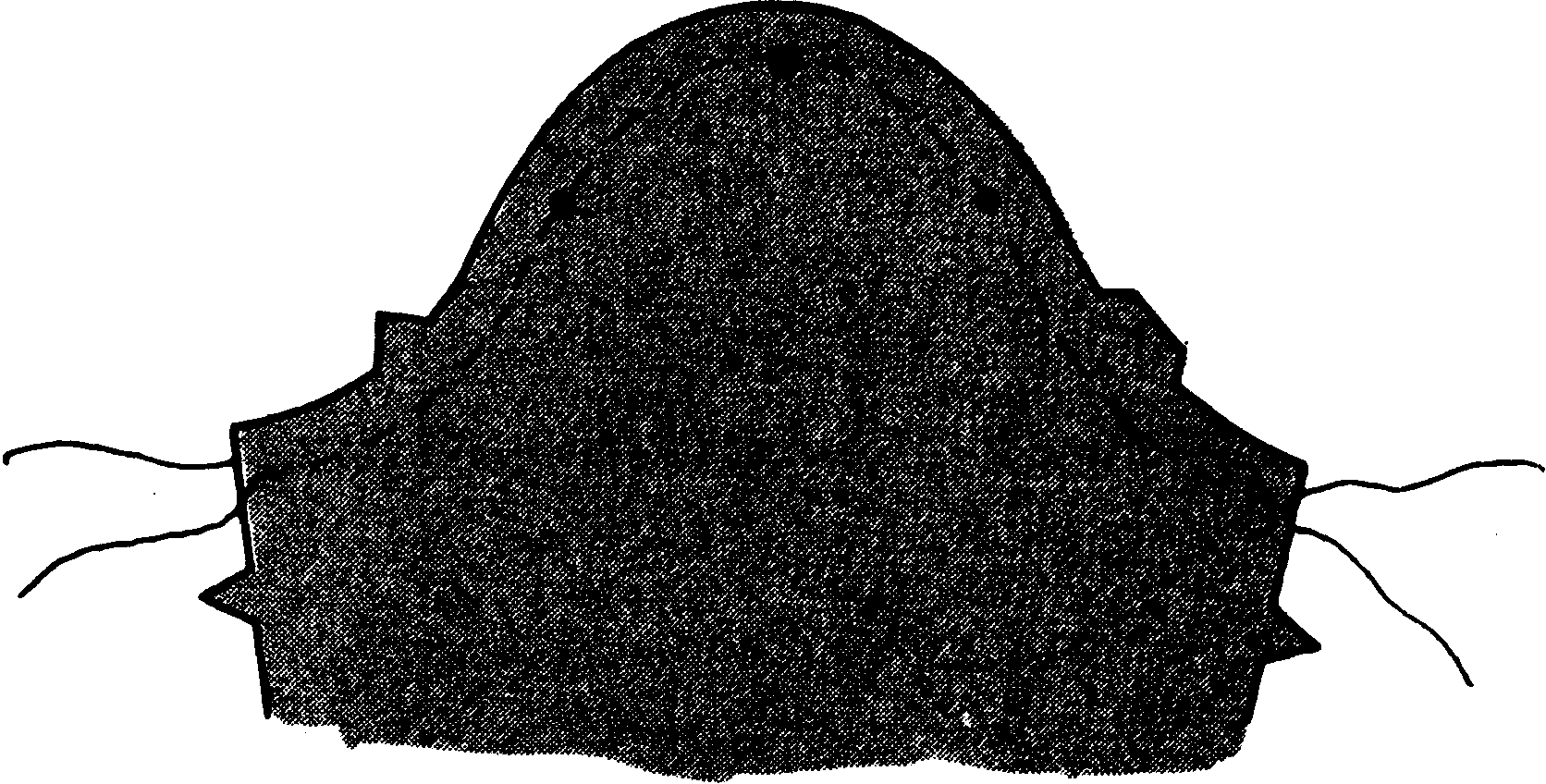
![]()
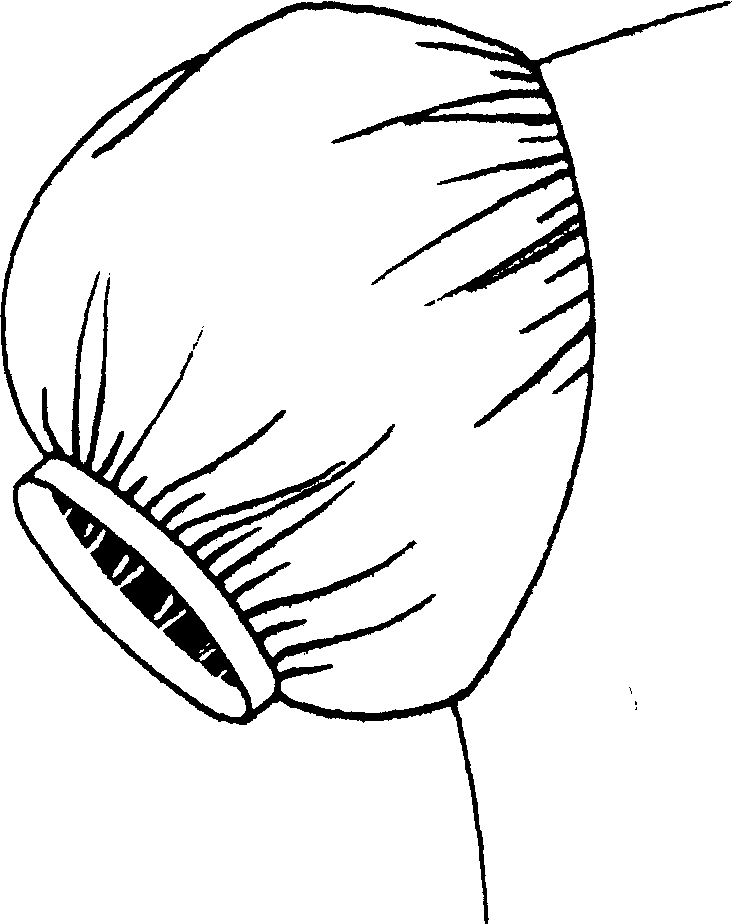
Fig.35 Fig.36 Fig.37
All set-in sleeves are cut with a sleeve cap that is larger than the armhole section into which it must fit. This extra fullness or "ease" is necessary for the sleeve to fit over the arm and hang correctly. The home-sewer must learn to distribute this fullness evenly across the sleeve cap so that it is eased and not gathered.
Two-piece Set-In Sleeve
This sleeve is found mostly in suits and coats. Both sections of the sleeve are shaped to produce a fitted sleeve. The parts should be joined with a plain seam and pressed. After the sleeve is made it is sewed into the armhole in the same way as the one-piece sleeve, and the lower edge finished in an appropriate manner.
Puffed Sleeve
Stitch the underarm seam and finish hem edge of the sleeve. Place two rows of machine-basting between markings on sleeve cap. Place one row on the seam line and the other 1/8inch into the seam allowance. Pin sleeve into the armscye, right sides together, matching seams, notches and markings. Draw up the bobbin threads evenly until the sleeve fits the armscye smoothly, and distribute the gathers evenly. Holding the sleeve toward you, baste the sleeve in place. Then stitch. Press the seam at the top of the puffed sleeve away from the gathers and toward the neckline. Press only to the seam line to keep from flattening the gathers.
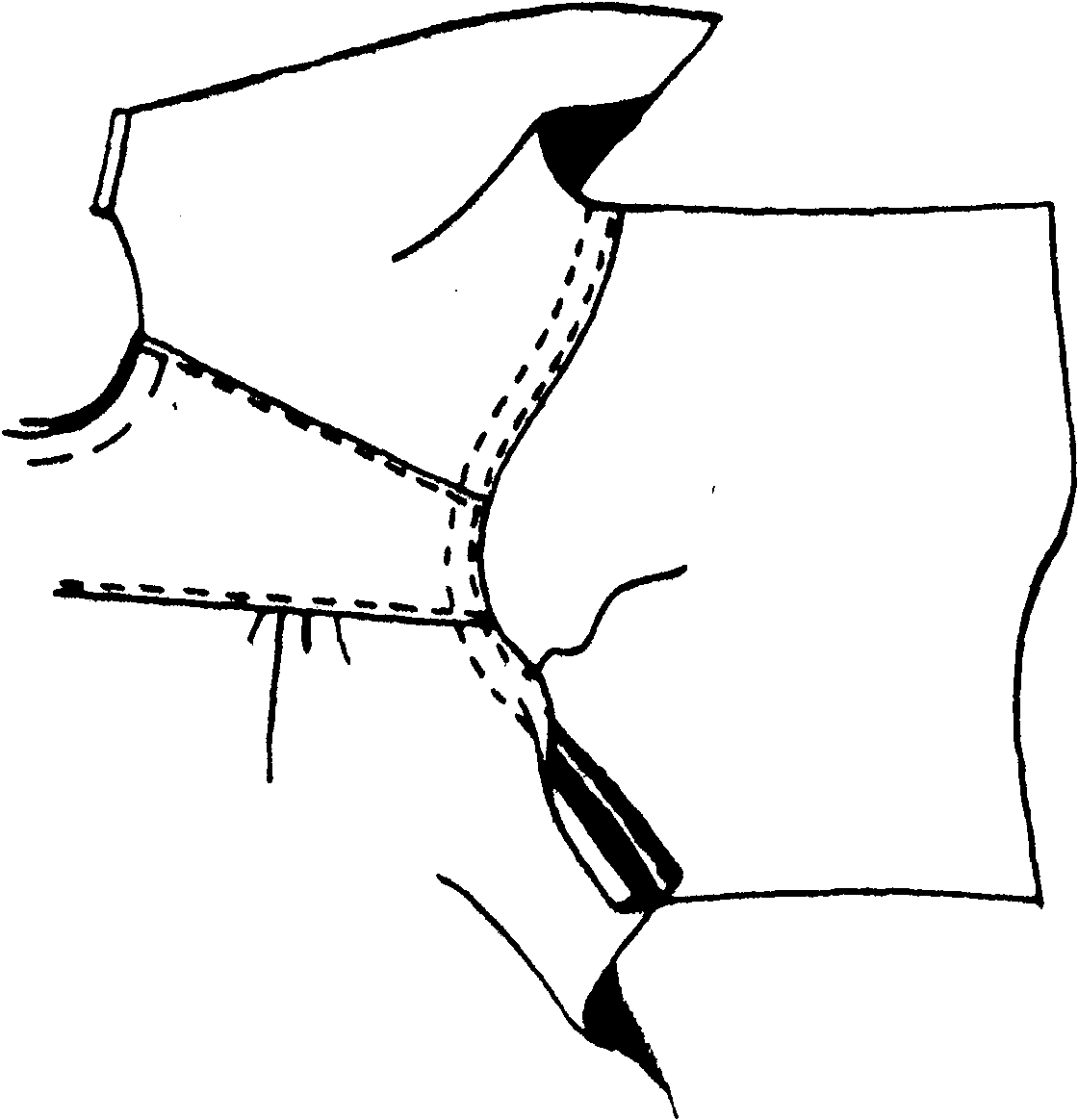

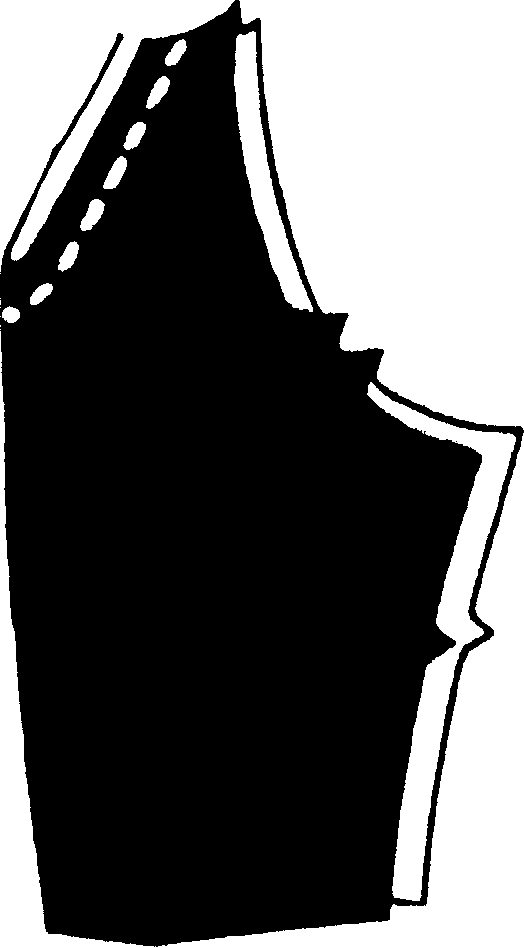
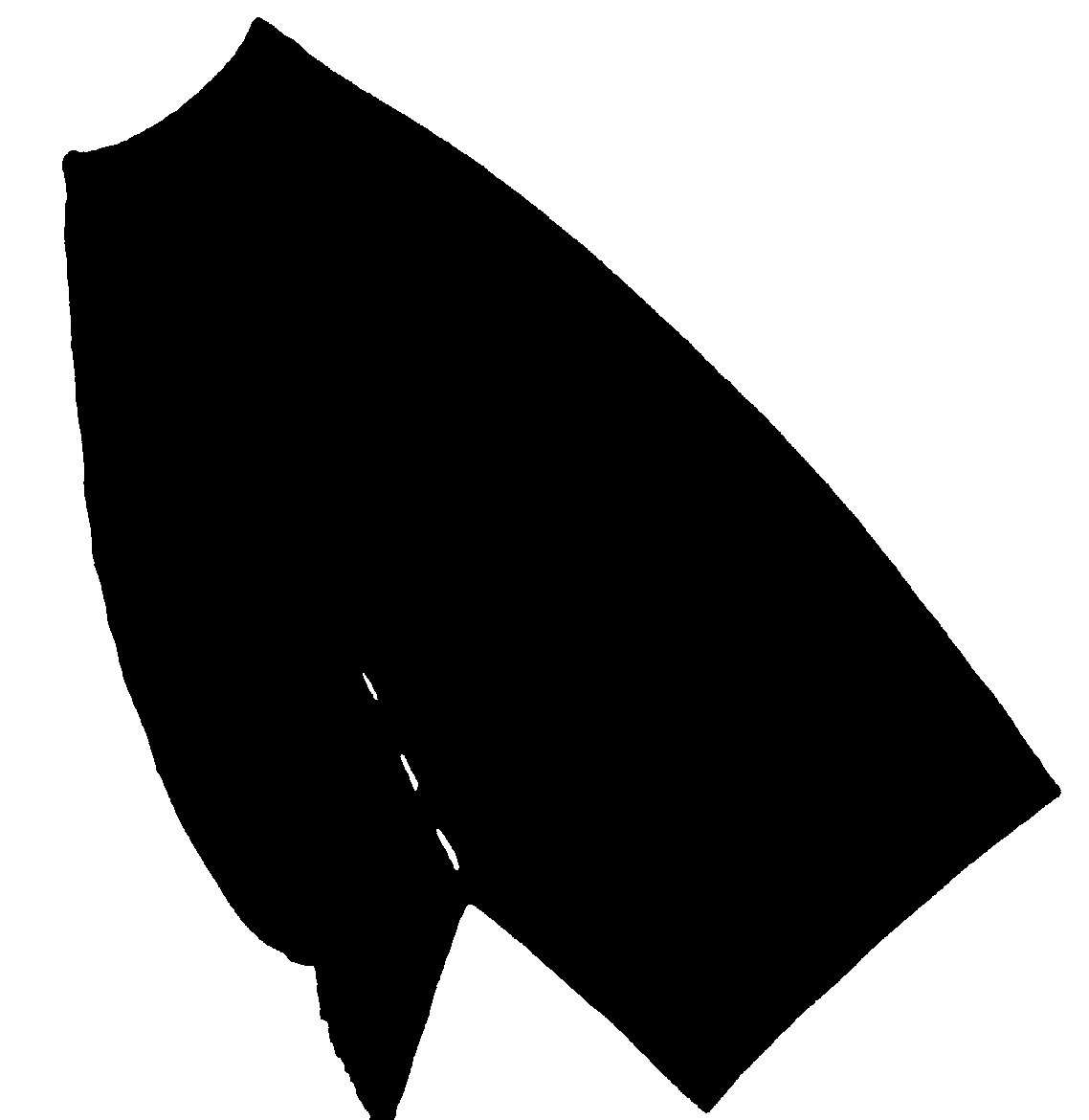
Fig.38 Fig.39 Fig.40 Fig.41
Shirt Sleeve
The construction of this type of sleeve is quite different from that of the regular set-in sleeve. The cap of a shirt sleeve is more shallow and has much less fullness. A flat-fell seam is used instead of a plain one.
First join the shoulder seams or yoke of the shirt and finish the seams, but do not sew side seams. Pin the sleeve into the armscye, wrong sides together, matching notches and markings and keeping seam lines even at underarm. Ease in the fullness across the cap of the sleeve. There will not be enough fullness to require a gathering thread. Press the seam open and then toward the sleeve. Trim sleeve seam allowance to 1/8 inch. Turn under the raw edge of the shirt seam allowance 1/4 inch and stitch it over the trimmed seam allowance. Pin underarm seam of shirt and sleeve, wrong sides together. Make flat-fell seam. Finish lower edge of sleeve with a cuff or hem.
